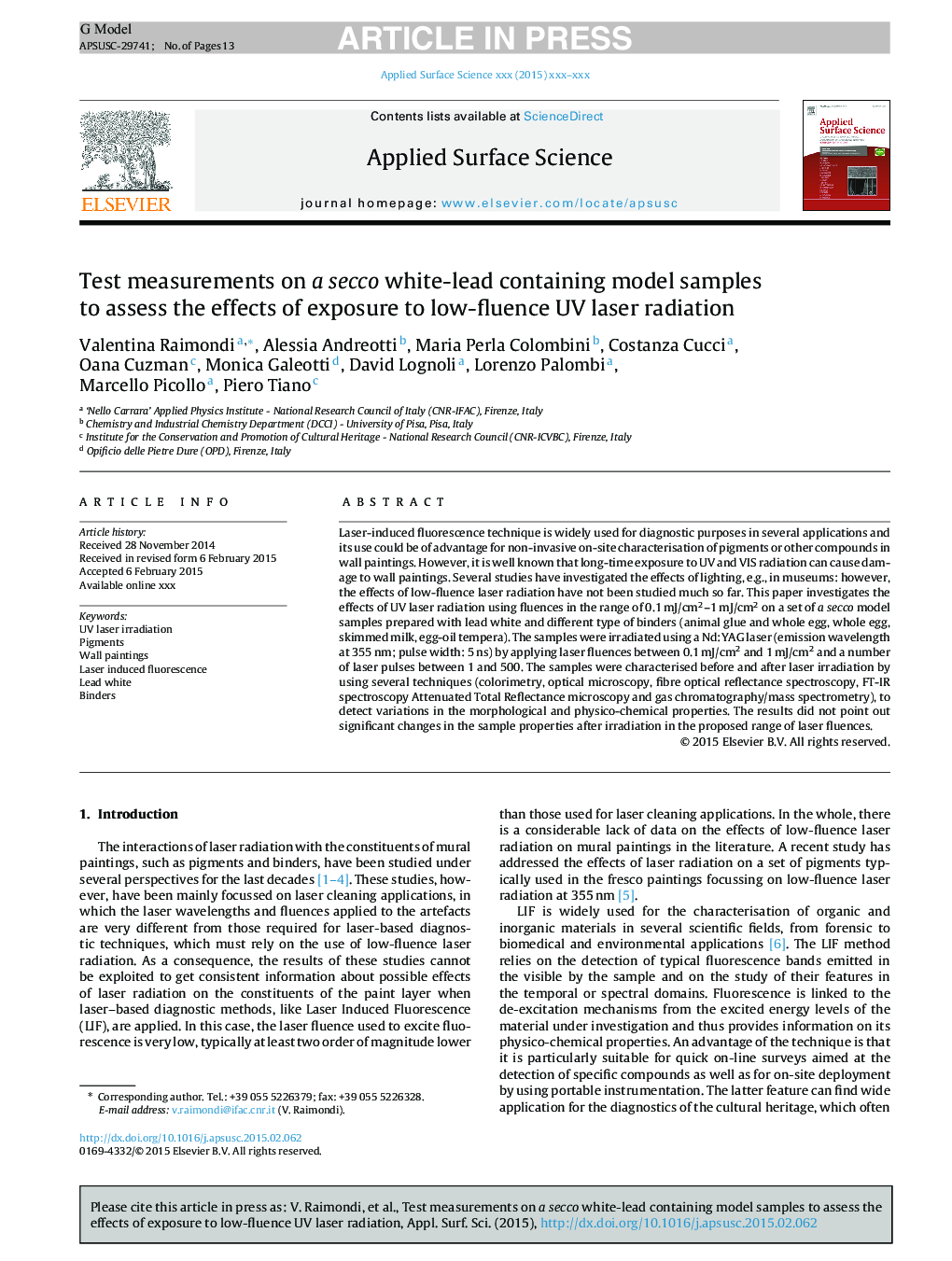| Article ID | Journal | Published Year | Pages | File Type |
|---|---|---|---|---|
| 5350183 | Applied Surface Science | 2015 | 13 Pages |
Abstract
Laser-induced fluorescence technique is widely used for diagnostic purposes in several applications and its use could be of advantage for non-invasive on-site characterisation of pigments or other compounds in wall paintings. However, it is well known that long-time exposure to UV and VIS radiation can cause damage to wall paintings. Several studies have investigated the effects of lighting, e.g., in museums: however, the effects of low-fluence laser radiation have not been studied much so far. This paper investigates the effects of UV laser radiation using fluences in the range of 0.1Â mJ/cm2-1Â mJ/cm2 on a set of a secco model samples prepared with lead white and different type of binders (animal glue and whole egg, whole egg, skimmed milk, egg-oil tempera). The samples were irradiated using a Nd:YAG laser (emission wavelength at 355Â nm; pulse width: 5Â ns) by applying laser fluences between 0.1Â mJ/cm2 and 1Â mJ/cm2 and a number of laser pulses between 1 and 500. The samples were characterised before and after laser irradiation by using several techniques (colorimetry, optical microscopy, fibre optical reflectance spectroscopy, FT-IR spectroscopy Attenuated Total Reflectance microscopy and gas chromatography/mass spectrometry), to detect variations in the morphological and physico-chemical properties. The results did not point out significant changes in the sample properties after irradiation in the proposed range of laser fluences.
Related Topics
Physical Sciences and Engineering
Chemistry
Physical and Theoretical Chemistry
Authors
Valentina Raimondi, Alessia Andreotti, Maria Perla Colombini, Costanza Cucci, Oana Cuzman, Monica Galeotti, David Lognoli, Lorenzo Palombi, Marcello Picollo, Piero Tiano,
